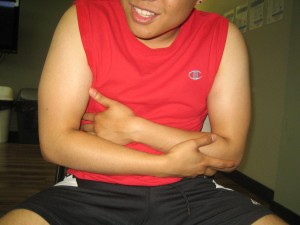It is a known fact that food allergies develop once the body has an unusual response to a certain food or ingredient. When it comes to white bread, the allergen responsible is no other than wheat. Since the symptoms are likely to be severe and affect the life of the individual, it is vital to fully understand why white bread allergy occurs and the first aid measures that can be provided as well as the treatment options.
What are the common causes of white bread allergy?
When it comes to white bread allergy, it occurs once the body mistakenly identifies the protein in wheat as dangerous. As a result, the immune system generates antibodies specifically immunoglobulin E that can trigger the symptoms of an allergic response. An actual allergy involves the immune system. The doctor can determine this by performing a skin prick test or blood test to detect the IgE.

Aside from white bread, wheat is also present in various foods such as rolls, oatmeal, pasta, sweet cakes, drink mixes and cereals. The allergy-like symptoms can also be caused by celiac disease which is an immune system response to the protein in wheat. Even though celiac disease has similar symptoms, it is not considered as a true allergy. Additionally, the allergy-like symptoms to white bread can also be caused by food intolerance which is triggered by a reaction to the chemicals present in white bread
What are the symptoms?
It is important to note that white bread allergy can trigger various symptoms that range from mild to severe. The symptoms include a burning sensation in the mouth or tongue, hives, abdominal cramps, redness of the face, facial swelling, diarrhea, vomiting, hoarse voice, nausea, difficulty swallowing, nasal congestion and lightheadedness. In some cases, the individual can also experience itching of the throat, eyes, skin and mouth.
When to consult a doctor
Consulting a doctor is a wise decision if you suspect that an individual has white bread allergy. The doctor can carry out tests to determine that the protein present in white bread is the main trigger of the symptoms. At the same time, a first aid measure is to provide the individual with over-the-counter antihistamines to help manage the mild to moderate symptoms such as itchiness, hives, rashes and sneezing.
The doctor can also prescribe oral or topical steroids such as cortisone to help minimize the symptoms. The individual must avoid white bread and products that contain wheat. It is also important to check carefully the product labels before eating any food. The individual must choose wheat-free substitutes such as quinoa, tapioca, barley, rye, rice and corn.
In case the symptoms are caused by celiac disease, the remedy is to stick to a gluten-free diet. Additionally, the doctor can also prescribe anti-inflammatory medications as the intestines heal.
Serious reaction
You have to call for emergency assistance if the individual has difficulty breathing, wheezing, severe swelling in the throat and loss of consciousness. These are indications of a severe allergic reaction called as anaphylaxis. If this reaction is not treated right away, it can be dangerous. If the individual has an EpiPen or injectable epinephrine, you have to give a shot to counteract the symptoms and bring the individual to the hospital. If a family member has white flour allergy, it is time to take a course on first aid training today.
